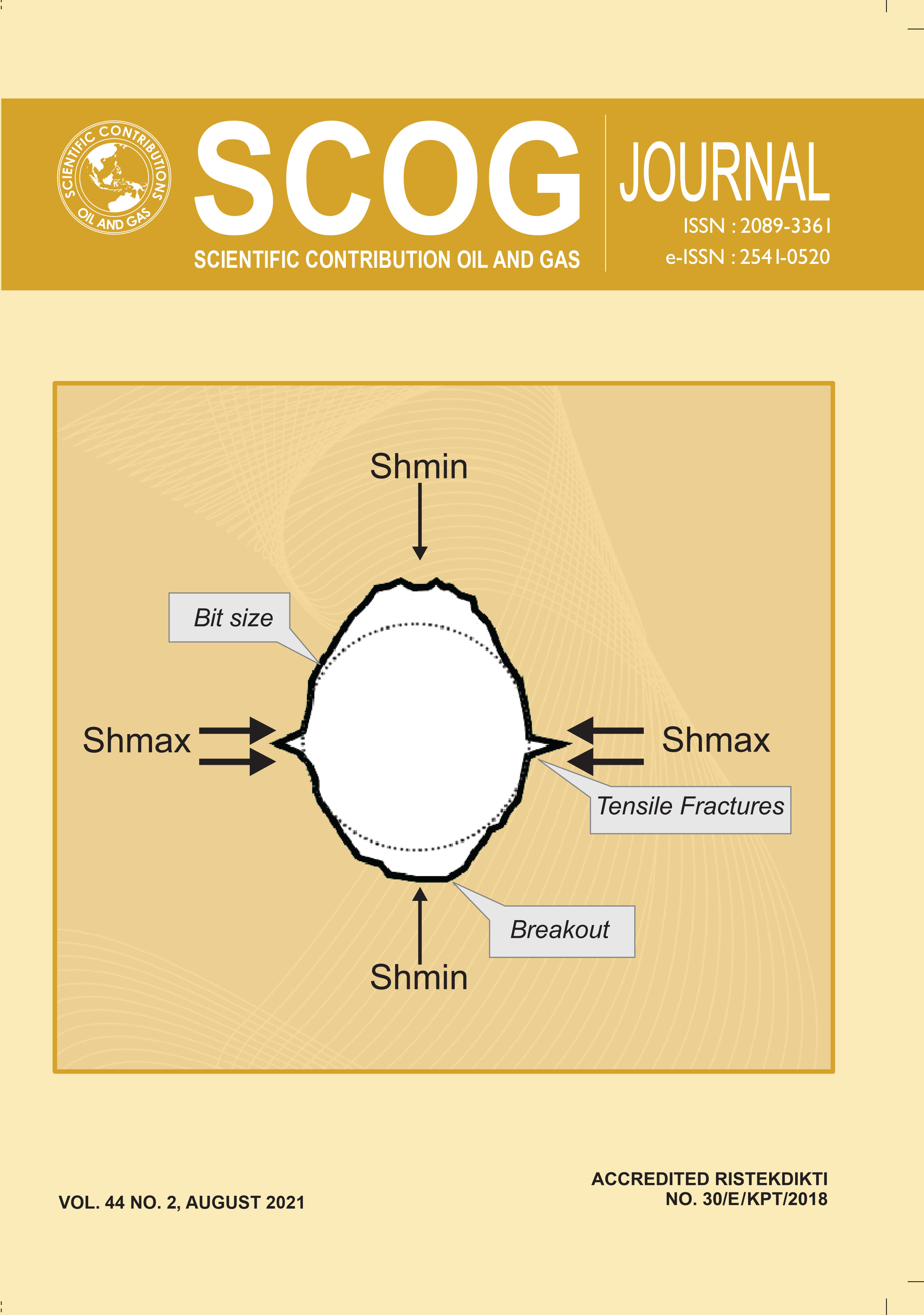Prediction of Hydraulic Fractured Well Performance Using Empirical Correlation and Machine Learning
DOI:
https://doi.org/10.29017/SCOG.44.2.589Keywords:
Hydraulic Fracturing, Well Performance, Empirical Correlation, Machine Learning.Abstract
Hydraulic fracturing has been established as one of production enhancement methods in the petroleum industry. This method is proven to increase productivity and reserves in low permeability reservoirs, while in medium permeability, it accelerates production without affecting well reserves. However, production result looks scattered and appears to have no direct correlation to individual parameters. It also tend to have a decreasing trend, hence the success ratio needs to be increased. Hydraulic fracturing in the South Sumatra area has been implemented since 2002 and there is plenty of data that can be analyzed to resolve the relationship between actual production with reservoir parameters and fracturing treatment. Empirical correlation approach and machine learning (ML) methods are both used to evaluate this relationship. Concept of Darcy's equation is utilized as basis for the empirical correlation on the actual data. The ML method is then applied to provide better predictions both for production rate and water cut. This method has also been developed to solve data limitations so that the prediction method can be used for all wells. Empirical correlation can gives an R2Â of 0.67, while ML can gives a better R2Â that is close to 0.80. Furthermore, this prediction method can be used for well candidate selection means.References
Economides, M. J., Hill, A. D., Ehlig-Economides, C. & Up, D. Z., 2013. Petroleum Production System. 2nd ed. Masscachusetts: Prentice Hall.
Economides, M. J. & Nolte, K. G., 2010. Reservoir Stimulation. 3rd ed. New Jersey: Prentice Hall.
Friedman., J. H., 2001. Greedy function approximation: a gradient boosting machine. Annals of Statistics, 29(5), pp. 1189 - 1232.
Holditch, S. A. & Ma, Y. Z., 2016. Unconventional Oil and Gas Resources Handbook: Evaluation and Development:Elsevier/Gulf Professional Publishing.
Kang, S., 2021. k-Nearest Neighbor Learning with graph neural networks. Mathematics, 9(8), p. 830.
Makhotin, I., Koroteev,, D. & Burnaev, E., 2019. Gradient boosting to boost the efficiency of hydraulic fracturing. Journal of Petroleum Exploration and Production Technology, pp. 1-7.
Mutalova, R. F., Mozorov, A.D., Osiptsov, A.A., Vainshtein, A.L., Burnaev, E.V., Shel, E.V., & Paderin, G.V., 2019. Machine learning on field data for hydraulic fracturing design optimization. Journal of Petroleum Science & Engineering. Special Issue: Petroleum Data Science, pp. 1-21.
Pearson, K., 1920. Notes on the history of correlation. Biometrika, 13(1), pp. 25-45.
RibariÄ, M. & Å uÅ¡terÅ¡iÄ, L., 2017. Empirical formulas for prediction of experimental data & appendix, Slovenia: Jožef Stefan Institute, Ljubljana.
Smola , A. & Viswanathan, S. V. N., 2008. Introduction to machine learning. Cambridge: Cambridge University Press.
Temizel, C., Canbaz, C.H., Palabiyik, Y., Aydin, H., Tran, M., Ozyurtkan, M.H., Yurukcu, M., & Johnson, P., 2021. A thorough review of machine learning applications in oil and gas industry. Virtual, SPE/IATMI.
Downloads
Published
Issue
Section
License
Copyright (c) 2021 SCIENTIFIC CONTRIBUTIONS OIL AND GAS (SCOG)

This work is licensed under a Creative Commons Attribution 4.0 International License.
Authors are free to Share — copy and redistribute the material in any medium or format for any purpose, even commercially Adapt — remix, transform, and build upon the material for any purpose, even commercially.
The licensor cannot revoke these freedoms as long as you follow the license terms, under the following terms Attribution — You must give appropriate credit , provide a link to the license, and indicate if changes were made . You may do so in any reasonable manner, but not in any way that suggests the licensor endorses you or your use.
No additional restrictions — You may not apply legal terms or technological measures that legally restrict others from doing anything the license permits.














